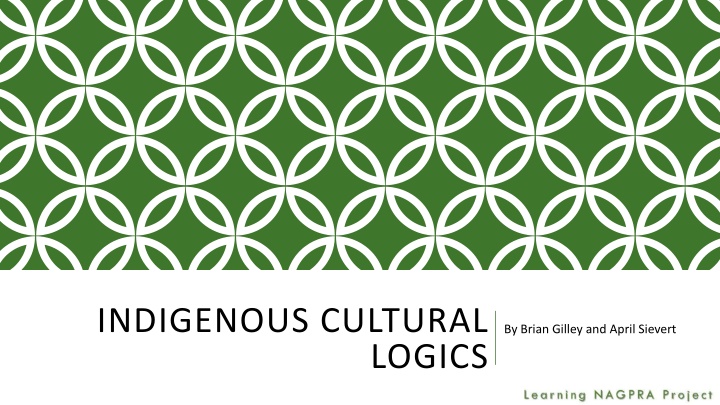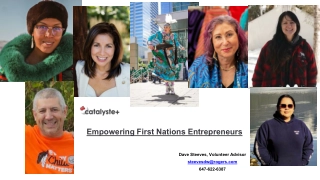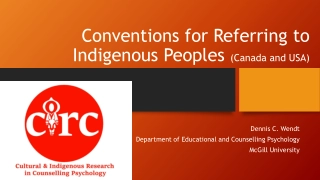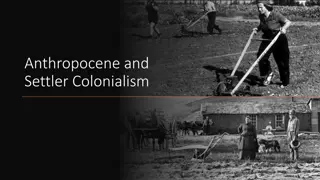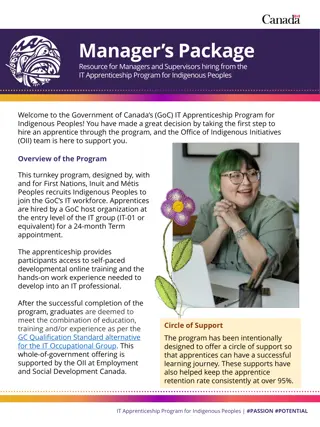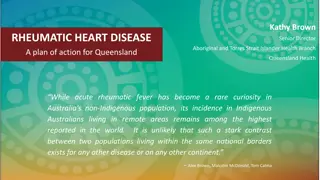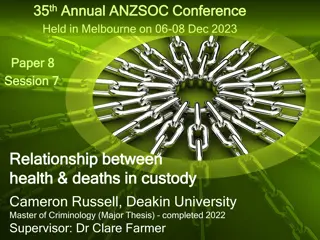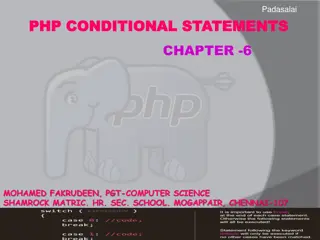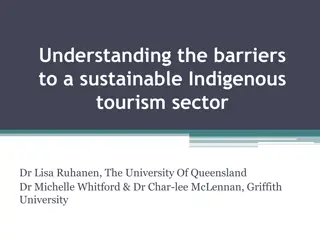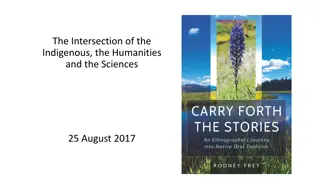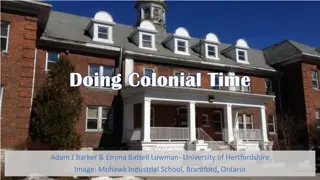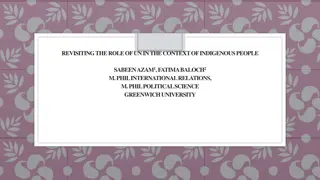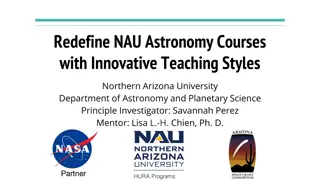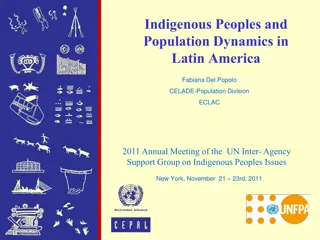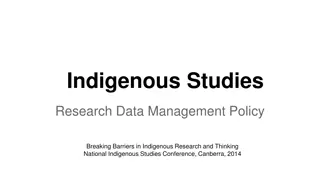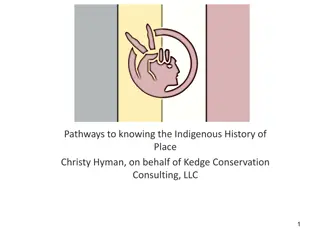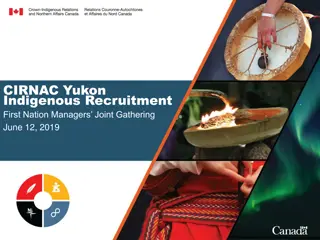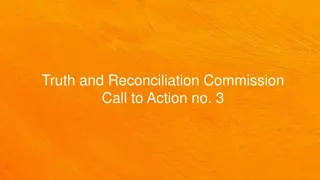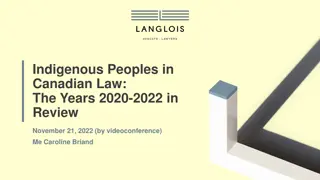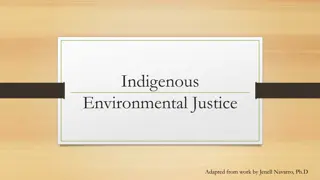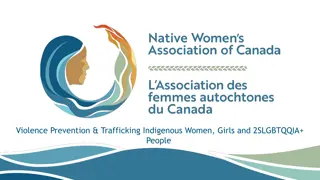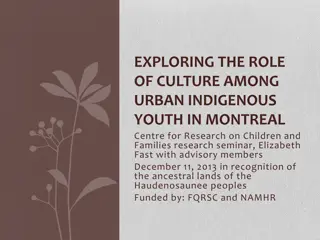Indigenous Cultural Logics and Learning Goals
Explore the differences between Euro-American and Indigenous social structures, delve into American Indian conservatism, and consider new perspectives on ancestors. Discover Indigenous models of social relations, autonomy, cultural change, and ancestral relatedness. Understand societal differentiation and undifferentiated institutional relations in Indigenous cultural contexts.
Download Presentation

Please find below an Image/Link to download the presentation.
The content on the website is provided AS IS for your information and personal use only. It may not be sold, licensed, or shared on other websites without obtaining consent from the author.If you encounter any issues during the download, it is possible that the publisher has removed the file from their server.
You are allowed to download the files provided on this website for personal or commercial use, subject to the condition that they are used lawfully. All files are the property of their respective owners.
The content on the website is provided AS IS for your information and personal use only. It may not be sold, licensed, or shared on other websites without obtaining consent from the author.
E N D
Presentation Transcript
INDIGENOUS CULTURAL By Brian Gilley and April Sievert LOGICS
LEARNING GOALS Recognize how differences between Euro-American social structure and Indigenous social structures affect how people conceptualize relationships Recognize the mechanism of American Indian conservatism, as described by scholar Duane Champagne Try applying Indigenous points of view to think of ancestors in new and culturally relevant ways
LIST OF TOPICS COVERED Indigenous model of social relations Differentiated versus undifferentiated social units Indigenous ideas about individual and community autonomy Indigenous ideas about cultural change Indigenous understanding about the relatedness of the ancestors
DIFFERENTIATION Societal Differentiation looks at how social institutions are configured. In Euro-Western Societies, different sectors: e.g. cultural, economic, political, religious, community. These are considered differentiated because they tend to be specialized, insulated from one another and more or less autonomous. Government may have highly differentiated institutions, e.g multiple branches such as legislative and judicial, or political parties. Change can occur at many loci. In Indigenous societies, major institutions overlap, less autonomous, less specialized, more fluid, more accessible to all members. These might be considered undifferentiated. The idea here is that there may be fewer loci for change. How would such arrangements affect susceptibility to change?
INDIGENOUS CULTURAL CONTEXTS Low Societal differentiation Societal institutions were integrated Differentiation would appear as individual specializations that members might have based on skills, or offices. Major institutional relations are not distinguished or specialized Among the Iroquois, e.g. economy and polity are closely interrelated through family & clan relations Among many tribes, economic and political decision-making is combined in a business committee, consisting of elected tribal members. But Indigenous societies are not simple. Among Shawnee, e.g. there are clans related by kinship, and five autonomous political units responsible or linked to different institutions.
UNDIFFERENTIATED INSTITUTIONAL RELATIONS Inherently resistant to change Institutional differentiation requires major reorganization of fundamental institutions (kinship, religion, political relations) Can be manifested as Sacred Order in Native communities Resistant to change in the institutional order so as to not bring on misfortune
Indigenous Logic in the Institutional Order Institutions are gifts from the creator Institutions are powerful and must be respected To change without consultation with Creator would be disrespectful Disrespect would prevent balance and lead to misfortune
CULTURAL CONSERVATISM: MAINTAINING CULTURAL INTEGRITY IN THE FACE OF CHANGE BROUGHT BY COLONIALISM Undifferentiated cultural elements foster conservatism Relies on structural relations of the cultural elements In Indigenous cultures cultural elements are interrelated and interpenetrate one another Conservatism reinforces the undifferentiated relations among art, morality, ceremony, politics, and causality
LOGIC OF NATIVE CULTURAL CONSERVATISM Interpenetrating Cultural Elements Change requires several elements changing simultaneously Change comes more slowly and at greater social cost Prioritizes Cultural preservation Resistance to wholesale change fosters cultural conservatism Resists Colonialism Societies resist Assimilation and institutional change Orients society toward preserving traditional institutions and ceremonies
AUTONOMY Basic Principles: The social order of most Indigenous communities scaffolds individual and community autonomy. Do not confuse autonomy with the Western Enlightenment notion of free will or individualism. Native social orders prioritize community. Individual autonomy is the ability of the person to find their own path, but within the rules and values of the society. One s quest for autonomy cannot challenge the fundamental values of the society otherwise someone places themselves outside the community by prioritizing their individual wants over the needs of the community. This worldview does NOT align with capitalism.
PERSONHOOD AND AUTONOMY Each individual is their own spirit being. Broadly defined, each person has their own path to follow. An individual s path cannot disrupt the social or spiritual order. When a person seeks their path or personal development it must be within the values of the community. Individual autonomy cannot disrupt the social order. Individuals who s personal development challenges the social or spiritual order of the community it throws social relations out of balance. The actions of individuals have long term implications in society. Even when individuals are long gone it is believed their influence carries through the generations.
ANCESTORS AND UNDIFFERENTIATED SOCIAL UNITS In many Native communities ancestors are considered a category of autonomous beings and designated within a metaphysical social unit. The ancestors interact with the living in various ways and often empower healers, thinkers and leaders with their presence. Ancestors provide the linkage between the world of the living and the spirit world. In this way there is no differentiation between the spirit world and the world of the living. Low differentiation thus places the ancestors, their remains and their material culture within the world of the living. Through an undifferentiated social perspective there is no delineation between the living and the dead. They occupy different dimensions of the same social reality.
THINKING THROUGH INDIGENOUS LOGIC Discussion: 1. Using the Indigenous cultural logic model presented above how do you think ancestors fit into this model? 2. What are two ways we might think about Indigenous human remains and ceremonial objects in a different way? 3. How should we approach research on ancestral remains and ceremonial objects if they are considered to be an aspect of living people s way of life? 4. How does cultural conservatism enable cultural preservation efforts by tribes in the U.S? 5. In what ways do differentiated Euro-western social units support cultural preservation?
REFERENCES & ACKNOWLEDGMENTS National Science Foundation grants 1449465, 1540447 Duane Champagne, Social Change and Continuity Among Native Nations, New York: Alta Mira Press, 2007.
